Running is a relatively cheap and accessible way to get active and for many, it provides more than solely physical benefits — delivering an escape from daily stresses and some much-needed headspace to cope with the demands of our busy lives.
But when you’re out pounding the pavements or running laps around your local park, the last thing you want to worry about is urine leakage.
Incontinence during physical activity is common, even in elite athletes. One study found 45% of female athletes had some form of urinary incontinence, and for over 30% of those, it was moderate to severe.
The fact it’s common doesn’t make it any less inconvenient or aggravating — not to mention potentially embarrassing. And it certainly doesn’t mean we should just put up with it! Running with incontinence might not be much fun, but fortunately there are ways to prevent urine leakage while you’re striving for a new personal best.
Is peeing while running normal?
Running is a high-impact sport and puts a lot of pressure on your bladder and pelvic floor. You may be at risk of stress urinary incontinence (SUI) if you do a high-impact sport, even if you haven’t had a baby. If you suffer from stress incontinence — which may be linked to a weakening of the pelvic floor muscles or urinary sphincter — this added pressure will often cause you to leak urine while engaging in physical activities such as running, jumping, lifting or cardiovascular workouts.
Equally though, an overactive bladder – one that contracts and wants to empty before it is full – may also present with similar symptoms to a weakened pelvic floor, including urinary incontinence.
Studies into the effect of long-distance running on the pelvic floor are relatively few, but it’s thought that around 30% of female runners could experience pelvic floor issues, so it’s not uncommon to experience stress incontinence during a run.
Stress incontinence can be triggered by childbirth or the menopause, but women who haven’t had children may also develop bladder control issues. The amount and type of training you do has a direct effect on pelvic floor function, with some types of exercise more likely to cause leaking than others.
When you run, the degree of impact depends on a number of factors, including your gait, foot pattern, speed, terrain, and the duration of your run. The pelvic floor feels the force of that impact on every step; and for those with existing pelvic floor issues, it’s important to know that running is likely to make things worse.
When women experience incontinence, they often reduce their activity levels; around half resort to using incontinence pads, and many are simply unaware of the available treatments, meaning they’ll often abandon activities like running through fear of unwelcome leaks.
If, however, forgoing your run is a non-negotiable for you, here are 10 tips to help reduce the impact on your pelvic floor.
How to stop urine leakage while running: 10 expert tips
1. Visit a women’s health physiotherapist
If you suffer from stress incontinence while running, pelvic floor exercise, like kegels, can help to strengthen your pelvic floor and increase your ability to hold in urine. A women’s health physio will be able to assess exactly what type of pelvic floor exercise will be most beneficial.
You can ask your medical provider or GP to refer you to a women’s health physio, or seek one privately to assess your pelvic floor. This can be vital in understanding whether your pelvic floor needs more strength-focused work, or more release work, to help relax the muscles.
When strengthening work is required, a women’s health physio can assess whether your focus would be best spent on ‘quick’ squeezes, longer holds or a bespoke mix of the two.
Elvie Trainer is a great tool to aid your practice in-between sessions with your physio. It provides biofeedback so you can feel the work you’re doing as well as receiving both audio and visual feedback to aid your pelvic floor connection and ensure you’re performing the exercises effectively.
2. Work on your core strength
Varied training programs, including those offered by specialist pelvic floor movement coaches, teach you to manage the pressure within your abdomen for everyday occurrences such as coughs, laughs and sneezes, while building your core strength and fitness for movement.
Doing exercises that work on the core can also help you coordinate your breathing with your pelvic floor contractions and releases.
Are there exercises to avoid? It depends on what your personal pelvic floor problems are. If a particular exercise causes leakage, a feeling of downward pressure or bulging in your pelvis, or physical discomfort, this is a clear sign that something needs adjusting.
Sometimes changing positions or breathing patterns or engaging the muscles differently can solve the issue. If this doesn’t help, you may need to revert to doing different exercises that work better for you.
3. Invest in supportive footwear
Whether you’re an occasional jogger or a seasoned long-distance runner, the right footwear is essential. A good running shoe will absorb some of the impact on your body as you run, helping to reduce pressure on the pelvic floor. Talking to a specialist at a running shoe store can ensure a good fit with the right support.
How often you need to replace your running shoes will depend on the quality of your footwear, the surfaces you run on, and the frequency and duration of your runs, but the generally-accepted lifespan of a pair of running shoes is somewhere between 500 and 800 km — if you’re running 10 to 15k a week, then, you should consider investing in new trainers each year.
4. Choose appropriate clothing
Running in the right gear will ensure you not only look the part – you’ll also be appropriately attired for the elements, helping you get more from your workout.
Clothing designed to support your core, such as EVB Sport Support Wear, will help keep you feeling comfortable and confident during your run. They are designed to support your pelvic floor and provide proprioceptive feedback, making you less likely to leak urine.
5. Vary the terrain you run on
When you run on hard surfaces, you absorb the shock in your feet, knees, hips and lower back. Running on roads or pavements can also increase the pressure on your pelvic floor and your bladder.
Try to opt for surfaces with a little more give (such as grass) wherever possible. This will reduce the impact your body feels every time your foot hits the ground, and help to alleviate stress incontinence by easing some of the pressure on your bladder and pelvic floor muscles.
Varying your stride length, cadence and foot placement can also help you find motions that feel better for you and your pelvic floor.
6. Build your distances gradually
Those running longer distances may notice that it’s towards the end of a run that leaks start to occur. If you’re just starting out, begin with small, manageable distances and gradually build up to longer-distance runs as you feel more comfortable. Be aware of when symptoms typically occur and work back from there to manage your training without symptoms.
7. Stay hydrated — but not too hydrated!
This is a tricky one, because while it’s vitally important to stay properly hydrated during a workout to regulate your body temperature and maintain performance levels, drinking too much water will only increase your urge to urinate.
The best advice here is to drink water steadily throughout the day to maintain hydration, rather than gulping gallons of water just before or during your run. Take a water bottle with you, but take small sips each time you’re thirsty. Be wary of relying on energy drinks, as these are often loaded with sugar and caffeine and can increase the need to urinate.
8. Work on your breathing…and your jaw
Did you know there was a connection between your jaw and your pelvis? When things are feeling hard or tricky, pursing the lips firmly together or clenching the jaw isn’t an unusual thing to do. But that tension can increase pressure through to our pelvic floor, increasing the likelihood of pee leaking.
Learning how to breathe efficiently while exercising will help you get more out of your workouts, but it can also help to reduce your risk of urine leakage by improving the relationship between your diaphragm, abdominal muscles and your pelvic floor.
While exercising, the aim is to breathe continuously. It’s not unusual for us to inadvertently hold our breath when finding movement hard or tackling tricky terrain. Holding your breath puts pressure on your pelvic floor.
To feel that connection between your breath and pelvic floor try this technique at home:
Lie down comfortably, keeping your chest and shoulders relaxed.
As you inhale, focus on expanding your abdomen and relaxing your pelvic floor.
As you exhale, focus on gently contracting your abdomen, while contracting and lifting your pelvic floor.
If possible, inhale through your nose and exhale through your mouth
To help feel what’s going on, rest a hand(s) on your abdomen to feel your body move with your breath.
9. Get sufficient, good quality sleep
If you’re not sleeping well, then your muscles aren’t getting a chance to properly recover between your running sessions. While this can contribute to joint pain, stiffness and body aches, it can also have a negative impact on the resilience of your pelvic floor muscles over time.
To boost the amount of shut-eye you get each night, try to get into a daily sleep routine where you wake up, wind down, and go to bed at roughly the same time each day. You should also refrain from doing any intense exercise too close to bedtime, and avoid caffeine, alcohol, or large meals just before bed.
10. Avoid bladder-irritating foods or drinks
Certain foods and drinks can irritate the bladder and amplify the symptoms of urinary incontinence, making it more likely that you’ll leak urine while you run. These include:
Alcohol.
Caffeinated drinks such as coffee and tea.
Fizzy drinks.
Acidic fruits (such as oranges, lemons and grapefruits) and fruit juices.
Spicy foods.
Tomatoes.
Chocolate.
Consider starting a diary to track what foods (if any) affects you. Make a note of what changes when you remove items from your intake. If you find that something you love aggravates your pelvic floor issues it’s advisable to limit your intake where you can — it’s probably sensible not to have a large mug of coffee just before you head out for a run, for instance.
Running with pelvic floor issues
Running is a great form of exercise that can improve heart health, increase muscle strength, support bone health and reduce stress and anxiety (to name a few benefits), but it also places a significant amount of pressure on the pelvic area, which can exacerbate or even cause symptoms of pelvic floor dysfunction.
Depending on your particular symptoms, it may not be advisable to continue running if you’re experiencing pelvic floor issues. If you have pelvic floor dysfunction, it’s important to understand the type and scale of the issue affecting you and address it specifically with the help of a qualified health professional.
A women’s health physiotherapist can support your understanding using biofeedback and advise on the suitability of at-home pelvic floor trainers, such as Elvie Trainer, to support your pelvic floor.
Running while pregnant and after childbirth
If you were running regularly before you became pregnant, continuing to do so during pregnancy is generally safe, providing you don’t have preeclampsia, severe anemia, or placenta issues. However, most pregnant women tend to stop running during the third trimester as it becomes too uncomfortable — even most competitive long-distance runners stop running at this stage.
Post-birth, the postnatal period extends far beyond the first six weeks — your body takes at least a year to fully recover. All of the above applies during this period, but additional consideration and care need to be given to the changing status of your body and pelvic floor following pregnancy. So, while some women may be able to safely return to running within six months of childbirth, others may require much longer. Go steady!
This blog was updated on 21/3/23.
---
This blog post was written by Lisa Gimenez-Codd. Lisa is a female health & Holistic Core Restore® Coach specializing in supporting women through mindset, movement, and nutrition from motherhood to menopause. Visit her website or email her for more information.
The medical information in this article is provided as an information resource only and is not to be used or relied on for any diagnostic or treatment purposes. Please consult your doctor for guidance about a specific medical condition.





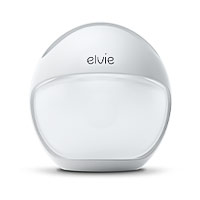

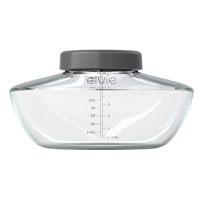
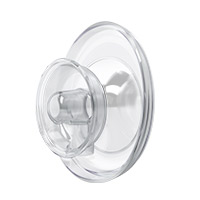

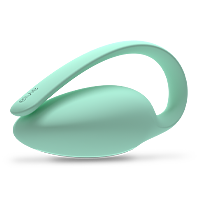
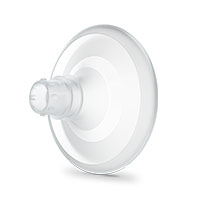
 11 minute read
11 minute read